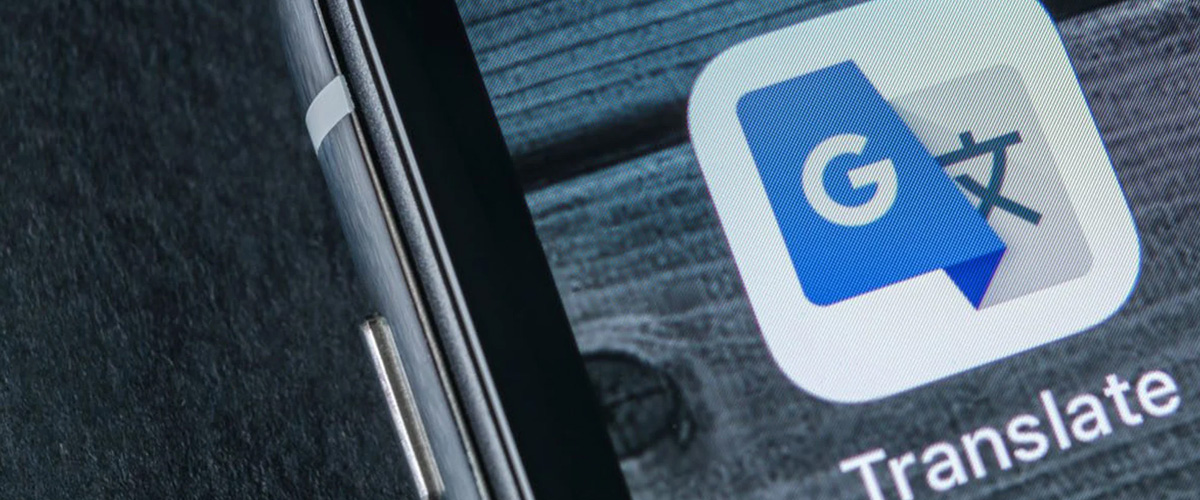When it was first launched, Google Translate could only translate two languages, and there were also only a couple of hundred users. Now, after 15 years, this tool has become one of the most popular machine translations with more than 500 million users. Let’s see what’s so interesting about Google Translate.

1. Humor beyond imagination
Translation requires interpretation and understanding. This is what Google Translate lacks. It is the nuances that are lost in Google Translate’s translation that sometimes create laughter beyond imagination. For example, when translating long sentences with complex structures, or when translating puns or idioms and proverbs. For many potential clients, those unintended jokes can be disastrous mistakes. Google itself realizes this and never uses Google Translate for its translation projects. Translators and interpreters are still the best way to ensure your message is conveyed correctly into another language.
2. Astonishing statistics.
When it was first released in 2006, the number of people using Google Translate was only a few hundred. Today, the tool translates about 100 billion words a day – the equivalent of 128,000 bibles, to more than 500 million people around the world (and this number is still growing). The number of Google Translate users is equivalent to the population of the European Union.
3. Easy to understand.
Mobile apps are making translation easier than ever. The Google Translate app on the Android platform can translate 90 languages without a database. The Word Lens app also translates text in pictures and photos. Don’t understand what the sign says? Very simple, just take a photo of it and then translate. All it takes is a few taps. These powerful tools are packed with innovative MIME extensions, making it easier than ever to understand each other, whether at work or in personal relationships.
4. Google Translate uses artificial intelligence (AI) technology.
Google Translate features many superior capabilities of AI. This tool has the ability to learn, specifically from past mistakes. Since Neural Machine Translation was launched in September 2016, Google Translate has been able to provide more accurate and contextual translations. With “Zero-Shot Translation” (allowing to translate between language pairs that the system has never encountered), Google Translate can now recognize parameters in a multilingual system and identify universal translation knowledge. That is, Google Translate can translate into as well as translate from languages that Neural Machine Translation has never “learned” directly.
5. AI super improves quality.
After upgrades by the Google Brain team, the improvements immediately appeared on Google Translate. Overnight, the quality of Google’s translations skyrocketed, much higher than what had been seen in the previous 10 years, and shocked everyone.
6. Improvement through “criticism”.
You can help improve Google Translate by reporting poor quality translations. Improvements have been made to bring the tool closer to perfection in interpreting, rather than translating directly. The larger the number of references, the more accurately the translation conveys the nuances of the original, as well as being more culturally relevant to the target language.
7. Google Translate forever changes online shopping.
Google Translate is a godsend to international shoppers. This tool provides shoppers on e-commerce platforms written in different languages around the world with enough information to confidently browse shops and open wallets. As long as they have an Internet connection and a mobile device or computer to access the web.
8. Developing.
When it was first launched, Google Translate could only translate two languages: English and Arabic. Now, it can provide reliable translations in more than 100 languages. That is more than enough to serve the needs of tourists as well as other daily multilingual needs. The most commonly used language pairs are translations from English into Indonesian, Arabic, Portuguese and Russian. Google Translate is certainly super handy, but don’t put all your trust in this tool. It may still be too early.
9. Highest effectiveness when translating European languages.
European Union and United Nations documents are part of a huge database of translated references. Exploiting these millions of pages of documents is part of Google Translate’s “learning” process. Other references include the Bible, which has been translated into nearly every language. There are also detective novels.
10. Looking into the near future.
The ability to self-learn and self-apply what it has learned is one of the hallmarks of a true AI. Google Translate has built its own universal translation language. Not only is this an unexpected benefit when it comes to programming, it’s also a positive sign that machines can learn and come up with new responses to solve problems. Instead of simply running traditional computer programs, Google Translate has now evolved into “machine learning”.
(According to Yuqo)






